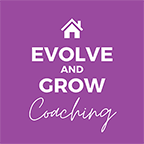About five years ago I learnt a valuable lesson from Business Mentor, Keith Cunningham, and it has served me very well. He said; “People buy what they want, not necessarily what they need.” And this is very true. I’m sure that lots of us have had a eureka moment when we’ve come up with an idea for a fabulous new product or service. But will people buy it? Well, that’s just one of the occasions where a survey can come in.
There are two main types of survey that I’d recommend you use regularly in your business:
- to your existing customers to measure the experience you’re providing and highlight any opportunities to improve or to create a new product or service.
- to potential customers to identify the main pains in the market at that time so you can address them.
Surveys to existing customers should be done on an ongoing basis as they buy from you or use your services; with results being carefully monitored and reviewed. But make sure you respond quickly to any issues. A well-known car manufacturer sent me a survey recently and then took three months to call me to discuss the issues – almost worse than not bothering in the first place!
Use your survey to establish what your customers like, what they might not and what makes them come back. Give them the opportunity to explain any ratings – it’s not much use knowing a customer gives you a one out of ten (or a ten!) for customer service if you don’t know why! Think about how you phrase your questions. A happy and satisfied customer might answer ‘no’ to ‘Is there anything we could do to improve the service we provide?’ But ‘What one thing could we do to make our service even better?’ would bring a different answer that will provide more valuable information.
Surveys to the wider market are worth doing every six – 12 months as things can change and develop so rapidly. Something that you may not have even considered may be causing a problem for potential clients that you can solve.
Seven top tips for creating your survey
- Include a mix of both quantitative questions e.g. multiple choice, rating scales etc. well as qualitative questions such as free text options.
- Make sure ratings scales are consistent – so always a scale of 1-10, or five options from excellent to poor.
- Keep surveys reasonably short – 10 questions or less is ideal
- Always give the option for anonymous replies as they will often be more honest (especially from existing customers).
- With potential customers it can be worth incentivising them to reply with entry into a prize draw or similar
- Always preface a survey with a clear and brief outline of what it is for and how long it will take to complete.
- Think about the order of the questions within the survey. Start with the more general ones before drilling into the specific. Keep anything more personal or sensitive for the end.
There are lots of tools for creating surveys but I use Survey Monkey as it allows you to hold all the information in one place and consolidates it so that you can see the trends. Plus, if you keep your survey to 10 questions or less, then it’s free!
Success in business is all about your ability to assess what the customer is thinking or doing, which is why surveys should be an ingrained habit that keep you close to these things. They let you identify precisely the nature of the problem you are solving for your customer and then create a product to do this, not vice versa!
Which brings me back to my Keith Cunningham moment. On the back of his comment I decided to survey potential customers about a truly wonderful new service that I absolutely knew the market needed. And the results? A resounding 0% of respondents wanted my new service. Truly wonderful though it might have been!

